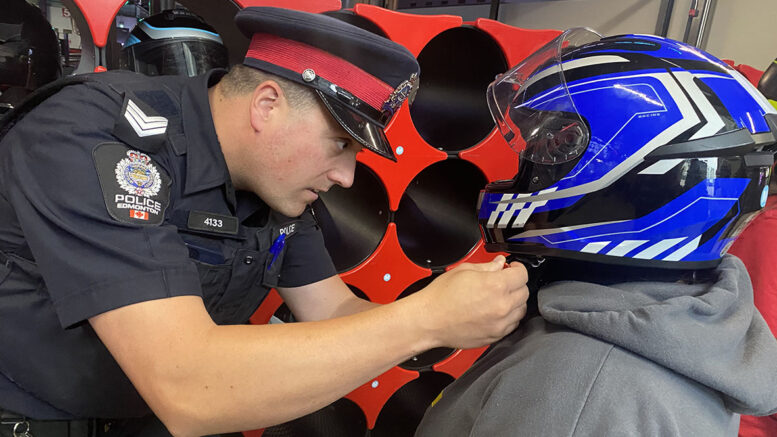By Jeremy Appel, Local Journalism Initiative Reporter
(ANNews) – For the past two weeks, about 20 Indigenous high school students have participated in the Oskayak Police Academy, which aims to forge positive relationships between Indigenous youth and Edmonton police officers.
The academy, which occurred from Aug. 12 to 23, is intended to bring together Indigenous-identifying high school students and police officers. It’s the product of a partnership between the Edmonton Police Foundation, Bent Arrow Healing Society and the Edmonton Native Healing Centre.
The event included a combination of traditional Indigenous practices, including a sweat lodge ceremony, designing ribbon skirts and shirts, and tipi painting, instruction from officers in different aspects of policing, including forensics, tactical and canine, as well as team building exercises, such as an obstacle course, soccer game and go-karting.
The activities wrapped up on Aug. 23 with a graduation ceremony for the 20 participating students.
Christie Pace, the Edmonton Police Service’s (EPS) Indigenous relations advisor, told Alberta Native News that Oskayak Police Academy was established a decade ago to “bridge the gap” between the Indigenous community and police by building individual “relationships of trust.”
“We decided as a group to land on youth, because youth are often forgotten in the conversation. They often become the scapegoats, and in actuality, they are our future, and we wanted to invest our time and energy in that space,” explained Pace, who is Black on her father’s side of the family and Métis-Cree on her mother’s side.
There’s a long history of mistrust between Indigenous communities and the cops, owing to the role of policing in Canada’s colonial foundations. This mistrust, Pace noted, manifests itself in different ways.
“Indigenous people don’t necessarily want to call the police for help because of mistrust, or what they’ve seen in the past, or what they’ve witnessed and that can grow within families,” she said.
For 23 years, Pace served as Bent Arrow Healing Society’s police liaison, which is where she saw the need to repair relations between Indigenous Peoples and police.
The academy’s aim, Pace said, is to “have some cross-cultural engagement and just offer an opportunity for these young folks to see police in a different light.”
Maria Makinaw, a Grade 11 student at Jasper Place High School from Ermineskin Cree Nation, told Alberta Native News that she signed up for the academy because she wants to be a lawyer.
“I thought it could be a cool experience … to gather information about law and how society works,” she said.
Makinaw added that she particularly enjoyed watching the canine training on Aug. 21.
She said her experience at the academy has changed her view of policing. In any profession, said Makinaw, there are always “good and bad” people.
“I can’t really put a label or a stereotype on anyone,” said Makinaw.
Six of the 12 EPS officers participating in the academy are Indigenous. One of them is acting Sgt. Catlin Chiasson, who is Métis through his father.
Chiasson, who is 39, became an officer when he was 19, beginning his career as an auxiliary constable with the RCMP in New Brunswick. After a stint policing reserves with the RCMP in Alberta, he joined the EPS about seven years ago.
He said he was attracted to policing as a career for the opportunity to “change lives and to help people in need, and be your authentic self and to mentor people.”
“We’re not going to change the history [of policing], but we do have a chance to change the future,” Chiasson said.
“Helping people understand what traumas individuals went through in the past is going to be very important, along with moulding our future with our youth and having them understand that we’re not working the way we used to work in the past. We’re working together.”
Chiasson described the relationship he’s cultivated with the students over the past two weeks as reciprocal in nature.
“We’re supporting the youth. We’re working with the youth. We’re listening to them. They’re teaching us. We’re also teaching them,” he said.



Be the first to comment on "Oskayak Police Academy seeks to build positive relationships with Indigenous youth in Edmonton"